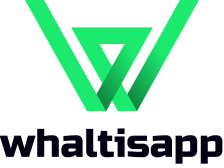
Dreaming of launching your own app? You’re not alone. In 2025, the app market is more vibrant and essential than ever, driving everything from daily tasks to multi-million dollar businesses. But before diving in, one of the first and most critical questions often asked is: “How much does app development cost?”
It’s a straightforward question with a nuanced answer. Just like building a house, the cost of an app can vary wildly depending on its size, complexity, features, and the quality of materials (or, in this case, development talent). While giving an exact figure upfront is impossible, we can break down the key factors influencing app development costs in 2025 and help you set realistic expectations.
The Core Factors That Drive App Development Costs
Several variables come into play when calculating the price tag of your future app. Understanding these will help you budget effectively:
1. App Complexity and Features
This is arguably the biggest cost driver. A simple app with basic functionality will naturally cost less than a complex platform with advanced features.
- Simple Apps: Think basic calculators, single-purpose utility apps, or a static content app. These might include simple login, profile creation, and core content display.
- Medium Complexity Apps: These often involve user accounts, API integrations (e.g., social media logins, payment gateways), push notifications, basic search functionality, and perhaps some custom UI elements.
- Complex Apps: This category includes apps with features like real-time synchronization, custom animations, integrations with multiple third-party services, AI/ML capabilities, intricate data processing, video streaming, or a robust admin panel. Think social networks, e-commerce platforms, or ride-sharing apps.
The more features you want, the more development time (and thus cost) will be required.
2. Platform (iOS, Android, or Both)
Do you need an app for Apple users (iOS), Android users, or both?
- Single Platform (iOS or Android): Developing for just one platform is generally more cost-effective as it requires less development time and a smaller specialized team.
- Both Platforms (Native): If you need a fully native experience on both iOS and Android, you essentially need two separate apps, doubling the development effort and cost.
- Cross-Platform/Hybrid: Tools like React Native, Flutter, or Xamarin allow developers to write a single codebase that works on both iOS and Android. While this can reduce initial costs and speed up development, these apps might sometimes sacrifice some native performance or access to specific device features. For many businesses, however, this offers an excellent balance.
3. Design (UI/UX)
A beautiful, intuitive, and seamless user experience (UX) and user interface (UI) are crucial for an app’s success. This involves:
- Wireframing & Prototyping: Mapping out the app’s flow and basic structure.
- UI Design: Crafting the visual elements, colors, typography, and overall look and feel.
- UX Design: Ensuring the app is easy to navigate, logical, and provides a positive user journey.
High-quality, custom design work takes time and skilled designers, contributing significantly to the overall budget. A generic template might be cheaper, but it won’t stand out.
4. Backend Development & APIs
Many apps need a “backend” – a server, database, and APIs (Application Programming Interfaces) to manage user data, process requests, send notifications, and integrate with external services.
- No Backend: Simple apps that work entirely offline or locally might not need one.
- Basic Backend: For user accounts, simple data storage, and push notifications.
- Complex Backend: For real-time data syncing, massive user bases, complex calculations, or integrations with multiple external systems. This can include cloud hosting costs (AWS, Azure, Google Cloud).
5. Post-Launch Maintenance and Updates
App development doesn’t end at launch. Ongoing costs include:
- Bug Fixes: Inevitable minor issues that arise.
- Updates: Adapting to new OS versions, security patches, and fixing compatibility issues.
- Feature Enhancements: Adding new functionalities based on user feedback or market trends.
- Server Maintenance & Hosting: Ongoing costs for keeping your app’s backend running.
Budgeting for 15-20% of the initial development cost annually for maintenance is a common industry practice.
Estimated App Development Costs in 2025
Based on the factors above, here’s a very generalized cost breakdown you might expect in 2025. Please note these are rough estimates and can vary widely based on geographical location of developers (North America vs. Eastern Europe vs. Asia), agency reputation, and specific project details.
- Basic Apps (Minimal Viable Product – MVP):
- Features: Core functionality, simple UI, no backend or very basic.
- Timeframe: 1-3 months
- Cost Range: $20,000 – $60,000+
- Medium Complexity Apps:
- Features: User accounts, custom UI, API integrations, push notifications, basic backend.
- Timeframe: 3-6 months
- Cost Range: $60,000 – $150,000+
- Complex Apps (Enterprise/Social/On-Demand):
- Features: Advanced backend, real-time sync, complex integrations, AI/ML, custom animations, security protocols.
- Timeframe: 6-12+ months
- Cost Range: $150,000 – $500,000+ (and can exceed $1M for truly massive platforms)
How to Get an Accurate Estimate
To get a precise quote for your app idea, you’ll need to:
- Define Your Requirements Clearly: Create a detailed list of features, user flows, and technical specifications.
- Research Development Teams: Look for agencies or freelancers with a proven track record in your industry or with similar app types.
- Request Detailed Proposals: Don’t just ask for a number; ask for a breakdown of costs, timelines, and the team’s approach.
Launching an app in 2025 is an exciting venture. By understanding the cost drivers and planning strategically, you can transform your vision into a successful digital reality. It’s an investment, but with the right approach, it can yield significant returns.
